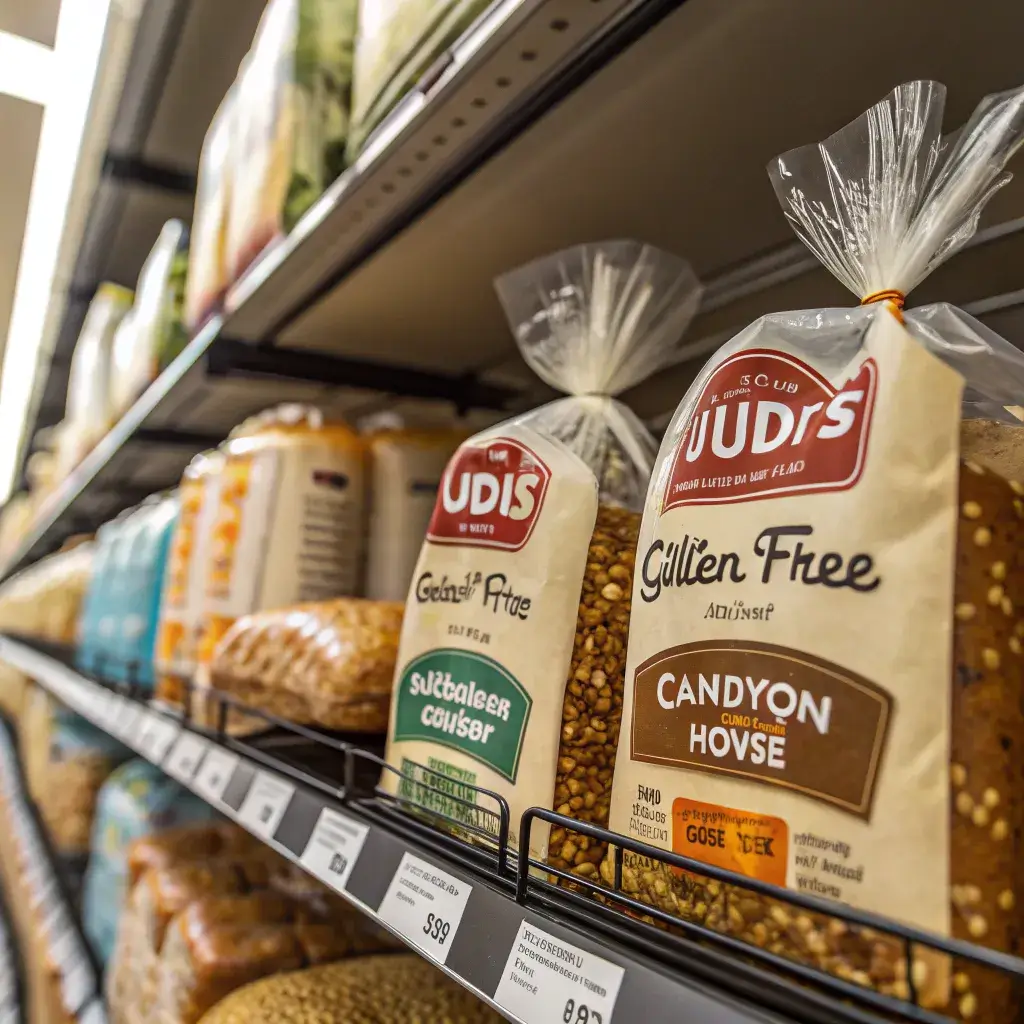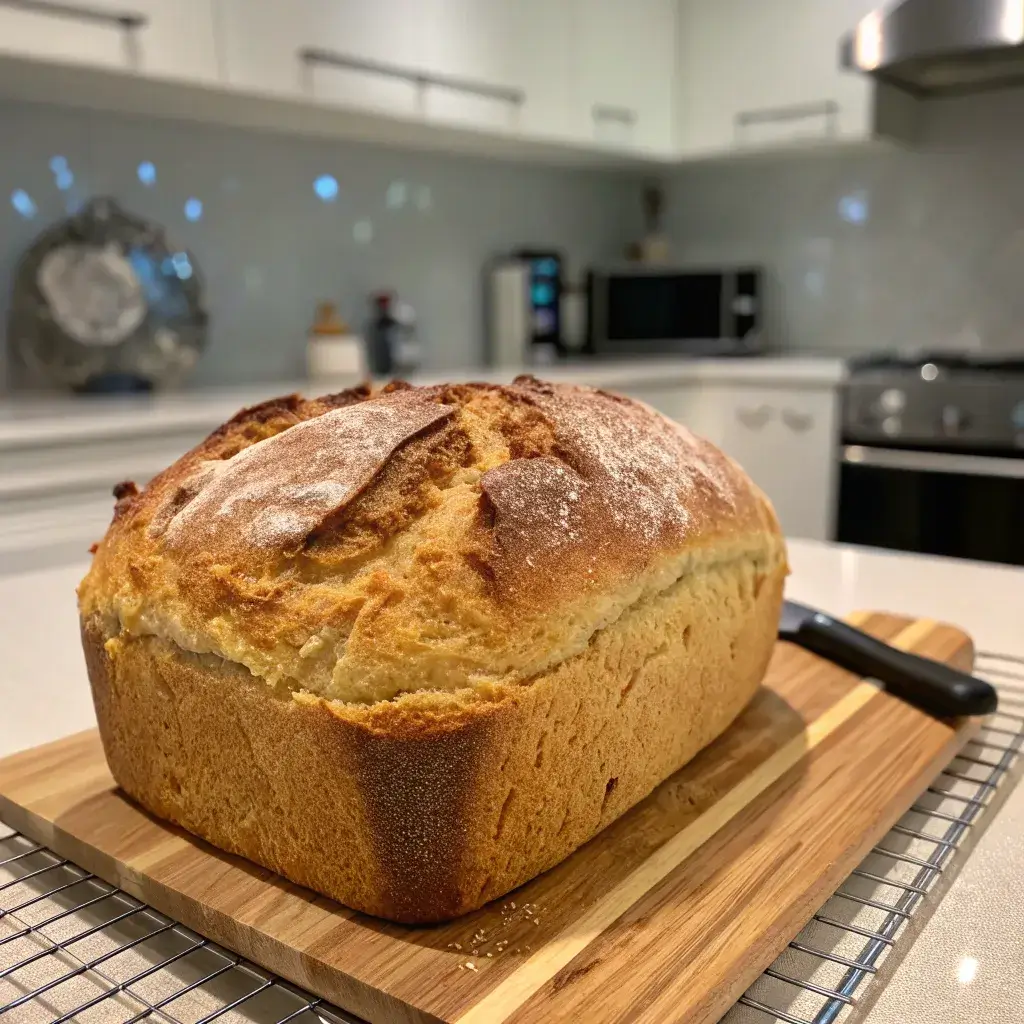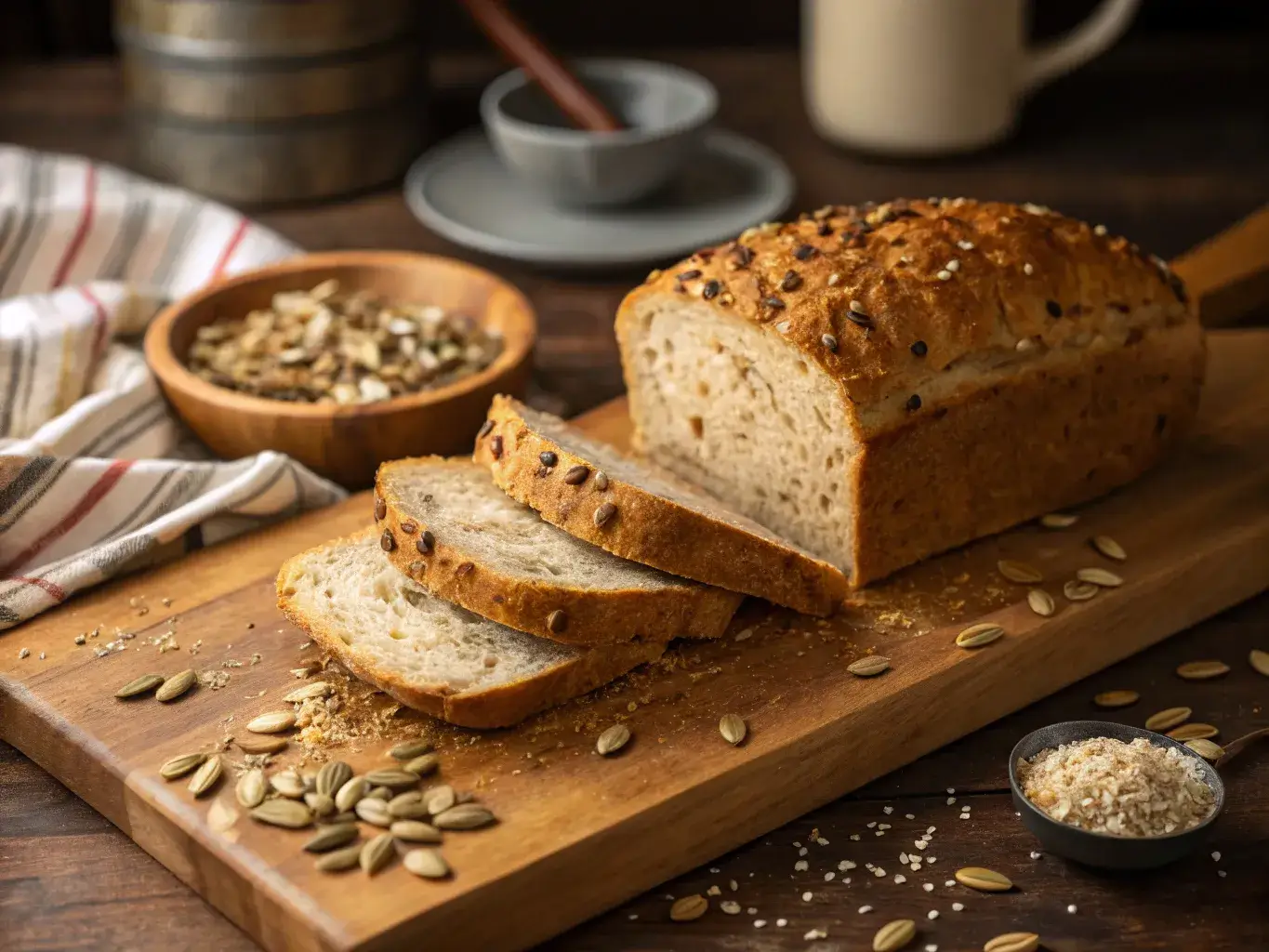Gluten free bread brands have come a long way from being dry, dense, and flavorless. Today, they’re not only safe for those with gluten sensitivity or celiac disease—they’re genuinely delicious. At Recipes of Kitchen – The Gluten-Free Sweet Kitchen, I’ve spent years searching for breads that meet real standards: taste, texture, and trust.
I’m Lidia Bellacci, and like many of you, my gluten-free journey wasn’t by choice—it began with health struggles that led to a gluten sensitivity diagnosis. What started as frustration turned into a mission. I taught myself how to bake again without wheat, rye, or barley. The results? Recipes that brought joy back to my table and confidence back to my kitchen.
This guide is for anyone navigating the confusing bread aisle or trying to find trustworthy brands online. Whether you’re newly diagnosed or a long-time gluten-free eater, you’ll discover which brands are worth your time—and which to skip.
Understanding Gluten-Free Bread
What is gluten and why avoid it?
Gluten is a protein found in wheat, barley, and rye. It gives traditional bread its structure and chew, but for people with gluten-related conditions, it can wreak havoc on health. Whether it’s celiac disease or non-celiac gluten sensitivity, cutting out gluten is often the only solution.
With more awareness and diagnosis, the need for gluten free bread brands that are both safe and satisfying has exploded. Gone are the days of cardboard-like slices. Today’s gluten-free options offer real flavor, better nutrition, and surprisingly soft textures.
Common ingredients used in gluten-free bread
Without gluten, bakers must get creative. Most gluten free bread brands use a combination of alternative flours and binding agents to mimic the elasticity and structure of wheat bread. These often include:
| Ingredient | Purpose | Gluten-Free |
|---|---|---|
| Brown rice flour | Mild flavor, light crumb | ✅ Yes |
| Tapioca starch | Adds chewiness and elasticity | ✅ Yes |
| Almond flour | Adds moisture and richness | ✅ Yes |
| Millet flour | Nutty taste, rich in nutrients | ✅ Yes |
| Xanthan gum | Provides structure | ✅ Yes |
| Psyllium husk | Helps with binding and fiber | ✅ Yes |
Many brands also cater to additional dietary needs like vegan, dairy-free, and soy-free options—perfect for modern households.
Discover great ideas like Strawberry Cookies if you’re expanding your gluten-free baking repertoire!
Health Benefits of Gluten-Free Bread
Who should eat gluten-free bread?
More and more people are turning to gluten free bread brands, not just out of necessity, but by choice. For those with celiac disease, even a small amount of gluten can trigger painful symptoms and long-term intestinal damage. Gluten-free bread is essential—not optional.
But gluten-free eating isn’t just for celiacs. Millions of Americans suffer from gluten sensitivity, experiencing symptoms like bloating, fatigue, headaches, or joint pain. If you’ve ever felt unusually sluggish or unsettled after eating bread, you might benefit from switching to a certified gluten-free alternative.
In recent years, gluten free bread brands have also become popular among people managing autoimmune conditions, skin disorders like eczema, and even certain neurological symptoms. For many, eliminating gluten brings noticeable improvements in energy, digestion, and mood.
Don’t miss our healthy twist on baking with Oatmeal Cookies Without Butter, another great gluten-free swap that doesn’t skimp on flavor.
Nutritional comparison to regular bread
When choosing between traditional wheat bread and gluten-free varieties, nutrition labels tell a story. Gluten-free breads tend to have a slightly different macronutrient profile. Let’s break it down:
| Nutrient | Regular Wheat Bread | Gluten-Free Bread |
|---|---|---|
| Calories (per slice) | ~80–100 | ~90–120 |
| Carbs | 12–14g | 14–18g |
| Protein | 3–5g | 1–4g |
| Fiber | 1–3g | 1–4g (higher with seeds) |
| Added Sugar | 0–2g | 1–4g |
| Iron | Often enriched | Often unfortified (varies) |
Some of the best gluten free bread brands include added seeds, nuts, or fiber-rich ingredients to boost nutrition. You’ll also find fortified options with calcium, iron, and B vitamins.
But here’s the deal: not all gluten-free breads are healthy. Some are loaded with starches, gums, and sugars to mimic the texture of wheat. That’s why choosing the right gluten free bread brands matters. Look for real ingredients—like millet flour, buckwheat, or quinoa—not just fillers.
Best Gluten Free Bread Brands in the Market
Finding the best gluten free bread brands can feel overwhelming with so many choices on the shelves. Some are dry, others fall apart, and only a handful taste like “real” bread. After years of testing and reading labels, these are the most trusted brands that consistently deliver on flavor, texture, and quality.

Udi’s Gluten Free – A household name
Udi’s is often the first name that comes up when discussing gluten free bread brands. Known for their soft white and multigrain loaves, Udi’s products are certified gluten-free and widely available in most grocery stores.
What makes Udi’s great?
- Soft texture, even when frozen and thawed
- Great for sandwiches and toast
- Available in various styles: white, whole grain, millet-chia
Drawbacks: Slightly higher sugar content, and some users report a crumbly texture after a few days.
Looking for another classic twist? Check out our Potato Filled Pastry—perfect for gluten-free savory bakes.
Canyon Bakehouse – Rich texture and flavor
Canyon Bakehouse has become one of the best-selling gluten free bread brands in the U.S., especially praised for its hearty slices and great flavor. It’s also dairy-free, nut-free, and soy-free.
Why Canyon Bakehouse stands out:
- No need to toast—soft right out of the bag
- 100% whole grain options available
- Gluten-Free Certification Organization (GFCO) verified
Popular varieties include Ancient Grain, 7-Grain, and Hawaiian Sweet. Perfect for sandwiches or a grilled cheese upgrade.
Schär – European quality in gluten-free
Schär brings European finesse to gluten-free baking. This brand has been perfecting its recipes for decades and is known for its wide range of gluten free bread brands, from panini rolls to artisan sourdough.
Pros of Schär bread:
- Dense, rich flavor perfect for open-faced toast
- Longer shelf life than many competitors
- Non-GMO and preservative-free
Some varieties can be slightly pricey, but the quality justifies it—especially for those missing the artisan feel of real bread.
Check out this treat while you’re here: Cookie Monster Cookies—another gluten-free win!
Little Northern Bakehouse – Non-GMO and vegan-friendly
Little Northern Bakehouse focuses on creating gluten free bread brands that cater to both gluten-free and plant-based diets. All their products are vegan, egg-free, and certified gluten-free.
Highlights of Little Northern Bakehouse:
- Seeded and whole grain options
- Sweet potato and millet bread lines
- Certified glyphosate-residue free
This brand nails the balance between health and flavor. Their wide selection makes them a favorite among those with multiple dietary restrictions.
Other Noteworthy Mentions
- Food For Life (Ezekiel gluten-free): Sprouted grain, flourless bread with a dense, nutrient-rich profile.
- Trader Joe’s Gluten Free Bread: Budget-friendly and pretty decent for everyday use.
- Three Bakers: A rising brand offering whole grain loaves with a satisfying bite.
Quick Comparison Table
| Brand | Texture | Certifications | Top Feature |
|---|---|---|---|
| Udi’s | Soft & springy | Certified GF | Classic sandwich style |
| Canyon Bakehouse | Whole grain feel | GF, dairy, nut, soy-free | Soft without toasting |
| Schär | European artisan | GFCO certified, non-GMO | Long shelf life |
| Little Northern Bakehouse | Moist & hearty | GF, Vegan, Non-GMO, Glyphosate-free | Allergy-friendly and vegan |
| Food For Life | Dense & chewy | Organic, GF, Sprouted grains | Flourless and nutritious |
Store-Bought vs Homemade Gluten-Free Bread
Pros and cons of store-bought brands
Store-bought gluten free bread brands offer unbeatable convenience. Whether you’re rushing through a weekday breakfast or packing lunch, grabbing a pre-sliced loaf is easy. But are they all worth it?

Pros:
- Wide variety of styles and flavors
- Certified gluten-free labeling for safety
- Easy to store and use (frozen or shelf-stable)
Cons:
- Can be expensive ($5–$8 per loaf on average)
- Added sugars, gums, and preservatives in many brands
- Smaller slice sizes and shorter shelf lives
While store-bought options are helpful, it’s important to read ingredient lists and nutrition panels carefully. Choose gluten free bread brands that avoid fillers and artificial stabilizers.
Can you make gluten-free bread at home?
Absolutely! Homemade gluten-free bread has become more accessible with modern recipes and readily available gluten-free flours. With just a few ingredients—like sorghum flour, psyllium husk, and yeast—you can make a fresh loaf that beats many store-bought brands.
Benefits of homemade bread:
- Total control over ingredients
- Cost-effective in the long run
- Customizable for taste and texture
Homemade baking also means fewer additives and a fresher taste. However, it requires time, effort, and the right tools (hello stand mixer!).
Don’t miss our comforting and naturally gluten-free Potato Filled Pastry for more homemade inspiration.
Gluten Free Bread for Special Diets
Vegan and gluten-free options
The best gluten free bread brands today often go beyond gluten-free—they’re also vegan, soy-free, and egg-free. This is especially important for people with multiple dietary restrictions or food allergies.
Top vegan + gluten-free brands to try:
- Little Northern Bakehouse
- Simple Kneads
- Happy Campers
These brands avoid animal products while still delivering soft, flavorful bread with good structure.
Low-carb, keto-friendly gluten-free bread
Some people not only avoid gluten but also limit carbs. The good news? Low-carb, gluten free bread brands do exist. These breads typically use almond flour, coconut flour, or flaxseed meal and have around 3–5g net carbs per slice.
Keto-friendly options:
- Base Culture (Paleo + Gluten-Free)
- Carbonaut (Zero Net Carb Bread)
- Julian Bakery (Thin Slim low-carb line)
Note that keto-style gluten-free bread is often more expensive and may taste different from traditional loaves, but they work well for those focused on glycemic control or weight management.
Discover more gluten-free comfort food in Cookie Monster Cookies—they’re a fun option for dairy- and gluten-sensitive eaters.
Taste Test – Which Gluten-Free Bread Is Best?
Criteria for testing: texture, taste, and toastability
When reviewing gluten free bread brands, we considered:
- Texture: Is it too dry or gummy?
- Taste: Does it mimic wheat bread or have its own unique flavor?
- Toastability: Does it crisp up or burn too fast?
After trying over a dozen brands, a few clear winners emerged.
The tastiest gluten free bread according to consumers
1. Canyon Bakehouse Hawaiian Sweet Bread
Soft, fluffy, and slightly sweet. Tastes like the real deal, especially when toasted.
2. Schär Artisan Baker Multigrain
Dense but flavorful. Excellent with avocado or used in paninis.
3. Little Northern Bakehouse Seeds & Grains
Toasts beautifully. Perfect for sandwiches and avocado toast.
4. Udi’s White Sandwich Bread
Classic soft sandwich bread—mild flavor, easy to pair with anything.

Each of these gluten free bread brands received top marks for taste and everyday usability. Many consumers also noted the importance of avoiding breads that “feel like cake” or crumble too easily.
How to Identify Certified Gluten-Free Bread
Labels and certifications to look for
With dozens of gluten free bread brands on the market, it’s critical to know which ones are genuinely safe. Just because something says “gluten-free” on the front doesn’t mean it meets strict standards. For those with celiac disease, cross-contamination or vague claims can lead to serious health consequences.
So, what should you look for?
Key gluten-free certifications and labels:
| Certification Logo | Organization | Meaning |
|---|---|---|
| GFCO Certified (circle GF logo) | Gluten-Free Certification Organization | Must test at 10 ppm or less; very strict |
| Certified Gluten-Free by NSF | NSF International | Tested and validated, trusted by medical professionals |
| Celiac Support Association (CSA) | Celiac Support Association | Requires <5 ppm gluten—stricter than most certifications |
| “Made in a dedicated GF facility” | Self-declared (no logo) | Indicates no wheat/flour cross-contact risk, but verify through reputation |
Always check the back of the package or company’s website for detailed information. The best gluten free bread brands will be transparent about their production processes and third-party testing.
Look for phrases like:
- “Certified Gluten-Free”
- “Processed in a dedicated gluten-free facility”
- “Tested to <10 ppm gluten”
Some brands use bold claims but don’t actually carry third-party certification. This is especially important if you’re managing a medically diagnosed gluten intolerance or autoimmune condition.
Trusted gluten-free certification bodies
Not all certification programs are created equal. Here are three of the most trusted organizations behind the best gluten free bread brands:
- Gluten-Free Certification Organization (GFCO)
- Most recognized label in the U.S.
- Requires independent facility inspections and routine audits
- Brands like Canyon Bakehouse and Schär carry this certification
- NSF International
- Focuses on food safety as a whole
- Offers gluten-free certification alongside allergen testing
- Often found on larger commercial products
- Celiac Support Association (CSA)
- Advocates for the strictest standards (less than 5ppm)
- Rare but trusted for extreme sensitivity
- Used by specialized boutique bakeries
Brands that voluntarily seek these certifications often go above and beyond in ingredient sourcing, manufacturing protocols, and consumer trust. These are the gluten free bread brands worth keeping in your pantry.
Misconceptions About Gluten-Free Bread
Is all sourdough bread gluten-free?
One of the most common myths is that sourdough bread is naturally gluten-free. While some sourdough breads have lower gluten levels due to fermentation, most are still made from wheat flour, which is not safe for those with celiac disease or gluten intolerance.
The confusion comes from long-fermented sourdough breads where enzymes break down part of the gluten. This reduces the gluten content—but doesn’t eliminate it. Unless a sourdough is made with certified gluten-free flour (like rice or sorghum), it’s not gluten-free.
Some of the best gluten free bread brands have created sourdough-style loaves that are completely gluten-free. Look for:
- Schär Gluten-Free Sourdough
- Simple Kneads Sourdough
Both are made without wheat and are safe for celiac patients.
Hidden gluten in “healthy” breads
Another myth is that multigrain or organic breads are naturally gluten-free. Unfortunately, “healthy” doesn’t mean “gluten-free.” Many multigrain breads contain rye, barley, or wheat blends, which are rich in gluten.
Common ingredients to watch out for:
- Spelt (a type of wheat)
- Kamut
- Triticale
- Barley malt
- Wheat germ
Always read the ingredient label closely and choose gluten free bread brands with certified packaging.
Where to Buy Gluten-Free Bread
Best places to buy online and in-store
As gluten-free products become more mainstream, gluten free bread brands are now stocked in both big-box retailers and niche online shops. Here’s where to shop:
Grocery chains with wide GF selections:
- Whole Foods Market
- Sprouts Farmers Market
- Kroger
- Trader Joe’s (private label GF bread)
Online stores:
- Amazon (ships Canyon Bakehouse, Schär, Base Culture)
- Thrive Market (organic + gluten-free bundles)
- Fresh Direct / Instacart (local delivery)
Online options are especially helpful if you live in rural areas or want access to less common GF brands.
Buying in bulk and subscription services
Some gluten free bread brands offer discounts if you subscribe or buy in bulk. This is a smart move for families or anyone who eats GF daily.
Top subscription-friendly brands:
- Udi’s (via Amazon Subscribe & Save)
- Base Culture (ships from brand site)
- Simple Kneads (direct-to-door service)
Tips:
- Freeze your extra loaves to preserve freshness
- Look for multi-pack bundles for savings
- Read reviews before committing to bulk buys
Don’t miss our comfort-driven Potato Filled Pastry if you’re buying in bulk and want to try baking GF from scratch too.
FAQ: Gluten Free Bread Brands
Which bread brands are gluten-free?
Several top brands are certified gluten-free and safe for those with gluten intolerance or celiac disease. The most trusted gluten free bread brands include:
Canyon Bakehouse
Udi’s
Schär
Little Northern Bakehouse
Base Culture
Simple Kneads
These brands are widely available in major grocery stores and online, with varieties that range from sandwich bread to sourdough-style loaves.
What bread is best for gluten intolerance?
For gluten sensitivity or intolerance, it’s best to choose certified gluten-free bread made in dedicated facilities. Canyon Bakehouse Ancient Grain and Schär Artisan Baker Multigrain are top choices. They’re free of cross-contamination and offer the texture and flavor of traditional bread without the gluten.
Which is the tastiest gluten-free bread?
Taste is subjective, but based on consumer reviews and our own kitchen tests, the following gluten free bread brands rank highest:
Canyon Bakehouse Hawaiian Sweet Bread (sweet, soft)
Schär Multigrain Sourdough (hearty and dense)
Little Northern Bakehouse Seeds & Grains (nutty and wholesome)
They toast well, hold up to spreads, and work for sandwiches—without falling apart.
Is all sourdough bread gluten-free?
No. Most sourdough breads are still made with wheat and contain gluten. The fermentation process reduces gluten slightly, but not enough to make it safe for those with celiac or gluten intolerance. Only sourdoughs made with certified gluten-free flours (like rice or buckwheat) are truly gluten-free.
Conclusion: Choosing the Right Gluten Free Bread Brands
Finding the right gluten free bread brands isn’t just about avoiding gluten—it’s about enjoying bread again. From soft sandwich loaves to hearty seeded slices, the gluten-free market is finally catching up in taste and texture. Whether you bake your own or buy from trusted brands, you no longer have to settle for dry, crumbly options.
Gluten-free living doesn’t mean sacrificing flavor. With the right brands—and a little kitchen creativity—you’ll fall in love with bread all over again.

